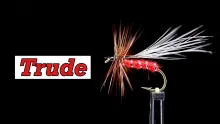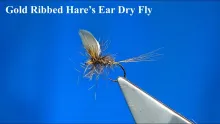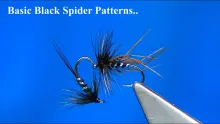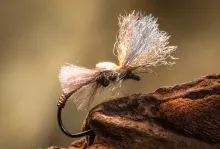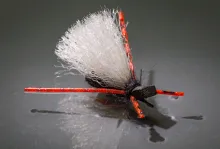This is my tying following Skues' article on the Blue Upright.
Hook Size - New scale 3, 4 which translates to a 12 or 11
Thread: Purple tying silk
Body: stripped peacock quill from a tail feather but not in the eye section. This quill has a dark brown color to cinnamon near the root end. If mimicking an egg sack tie in so you have two turns of the cinnamon color at the rear.
Hackle: a very dark blue dun almost black with a definite blue list. I used a very dark almost black Limousin hackle from France with a blue list and scant amounts of rust.
Skues describes tying in the hackle by the root or by the tip. He mentions how doubling the hackle is a further refinement to talk about another time. From my time tying Cutcliffe patterns from Devon with the hackle doubled I find that easiest to do tying in the feather at the tip and winding forward so that is the method I use. I tie in the hackle from the shoulder to the head...so through the thorax.
Tails??? The pattern as mentioned in Woolley's book, in Williams, in Halford and in Austin all include a tail. Austin and Halford are clearly tying a dry fly. Williams mentions this is a famous Devon WET fly but his favorite version is Austin's dry pattern. Skues specifically states no tail - so he either is explaining the pattern from a more direct pre-Halford/Austin traditional sense or it is his variation...I do not know. Two key Devon authors from the earlier period Soltau and Cutcliffe don't help - Soltau does not list pattern recipes and Cutcliffe does not list this fly at all.
Like many of these stiff hackled wets from Devon without a tail...this fly will ride butt down in the film mimicking possibly an emerger, cripple, dead dun, or spent spinner.
Enjoy!
- Log in to post comments

